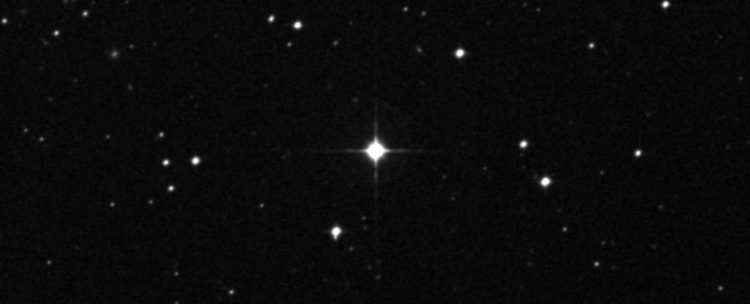What’s in a star? Well, if you’re a highly evolved specimen nearing the end of its life named HD 222925, rather a heck of a lot, actually.
Scientists have conducted an analysis of this dim object, and identified 65 separate elements. That’s the most elements ever found in a single object outside the Solar System, and most of them are heavy elements from the bottom of the periodic table, rarely found in stars.
Since these elements can only form in extremely energetic events such as supernovae or neutron star mergers, via a mechanism called the rapid neutron-capture process, this star’s composition could be a means to learn more about how heavy elements form.
“To the best of my knowledge, that’s a record for any object beyond our Solar System. And what makes this star so unique is that it has a very high relative proportion of the elements listed along the bottom two-thirds of the periodic table. We even detected gold,” said astronomer Ian Roederer of the University of Michigan.
“These elements were made by the rapid neutron capture process. That’s really the thing we’re trying to study: the physics in understanding how, where and when those elements were made.”
Stars are the factories that produce most of the elements in the Universe. In the early Universe, hydrogen and helium – still the two most abundant elements in the cosmos – constituted pretty much all matter.
The first stars formed as gravity pulled together clumps of this hydrogen and helium. In the nuclear fusion furnaces of their cores, these stars forged hydrogen into helium; then helium into carbon; and so on, fusing heavier and heavier elements as they run out of lighter ones until iron is produced.
Iron can fuse, but it consumes huge amounts of energy – more than such fusion produces – so an iron core is the end point. The core, no longer supported by the outward pressure of fusion, collapses under gravity, and the star explodes.
To create elements heavier than iron, the rapid neutron-capture process, or r-process, is required. Really energetic explosions produce a series of nuclear reactions in which atomic nuclei collide with neutrons to synthesize elements heavier than iron.
“You need lots of neutrons that are free and a very high energy set of conditions to liberate them and add them to the nuclei of atoms,” Roederer said. “There aren’t very many environments in which that can happen.”
This brings us back to HD 222925, located around 1,460 light-years away, which is certainly a bit of an oddball. It’s past the red giant stage of its lifetime, having run out of hydrogen to fuse, and is now fusing helium in its core. It’s also what is known as a “metal-poor” star, low in heavier elements… but extremely enriched in elements that can only be produced by the r-process.
Therefore, r-process elements had somehow been distributed throughout the molecular cloud of hydrogen and helium from which HD 222925 formed, around 8.2 billion years ago. That “somehow” has to have been an explosion that sprayed the r-process elements out into space.
The next question is: what elements? And that’s where HD 222925 is useful. We already knew that the star was rich in r-process elements. Roederer and his team used spectral analysis to narrow down precisely which ones it contains. That’s a technique that relies on splitting the wavelength of light from a star into a spectrum of wavelengths.
Certain elements can either enhance or dim specific wavelengths of light, as the atoms absorb and re-emit photons. Those emission and absorption features in the spectrum can then be analyzed and traced back to the elements that produced them, and identify their abundances. Of the 65 elements the team identified in this manner, 42 – nearly two thirds – were r-process elements.
These include gallium, selenium, cadmium, tungsten, platinum, gold, lead, and uranium. Since HD 222925 demonstrates no other oddness in its chemical composition, that means we can consider it as representative of the yields produced by the r-process source.
Although we don’t know whether the r-processes that produced these elements took place in a neutron star collision or a violent supernova, the level of detail that we now have means the star can be used as a sort of blueprint for understanding the output of the r-process.
“We now know the detailed element-by-element output of some r-process event that happened early in the universe,” said physicist Anna Frebel of MIT.
“Any model that tries to understand what’s going on with the r-process has to be able to reproduce that.”
The research has been accepted into The Astrophysical Journal Supplement Series, and is available on arXiv.













